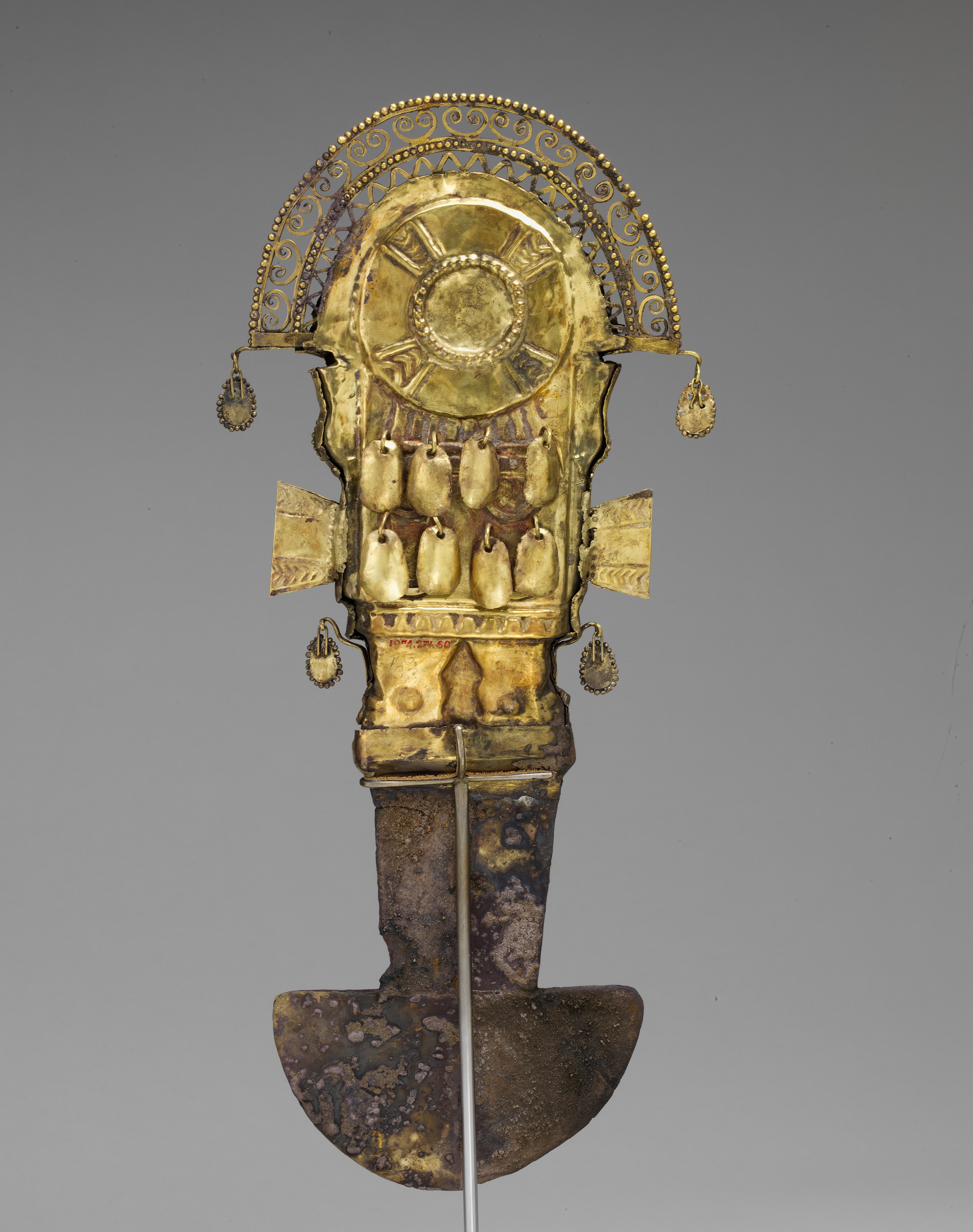Tumi (knife)
Not on view
Around A.D. 1000, high-status tombs were constructed at Batán Grande, a site now called the Sicán Archaeological Precinct, where a single burial could include as many as five masks: one attached to the head and the others stacked at the feet. The shape of the eyes is characteristic of the Sicán deity, also shown atop the ceremonial knife (tumi).
Alrededor del año 1000 d. C. se construyeron tumbas para personajes de alto rango en Batán Grande, un sitio hoy llamado Complejo Arqueológico de Sicán. Allí eran sepultados, junto con diversos objetos de gran valor, los nobles de la sociedad Lambayeque, en monumentales plataformas de adobe. La forma de los ojos es característica de la deidad de Sicán, también representada en la parte superior del cuchillo ceremonial (tumi).
Due to rights restrictions, this image cannot be enlarged, viewed at full screen, or downloaded.
This artwork is meant to be viewed from right to left. Scroll left to view more.




